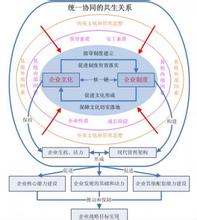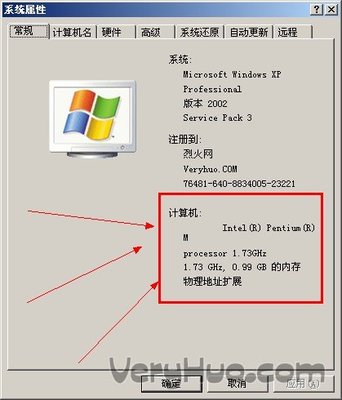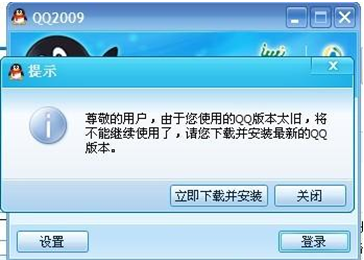摘要
党的十六届六中全会指明建设和谐文化是构建社会主义和谐社会的重要任务。构建和谐文化需要所有的企业参与创建和谐文化,因为企业是社会的基本单位。自指明和谐文化的重要意义后,许多中国企业提倡创建和谐企业文化。学者们也应积极地去研究和谐企业文化的基础理论。
本研究试图回答两个问题:第一,中国人认为什么是和谐企业文化?第二,不同的中国人群体在认识和谐企业文化方面存在哪些差异?首先,本文从中国传统文化与时代要求两方面来分析和谐企业文化的背景。第二,作者设计了一份开放式问卷,并向江苏与上海的员工发放。回收329份问卷,其中291份有效,回收有效率为88.45%。第三,本研究基于数据,识别出和谐企业文化的维度,并比较不同人群在认识和谐企业文化上的差异。第四,本文讨论了研究结果,分析了本文的局限,并探讨了未来的研究方向。本论文的研究结果将为定义、测评、分析和创建和谐企业文化提供理论参考。
ABSTRACT The Sixth Plenary Session of the 16th Central Committee of the Communist Party of China points out creating harmonious culture is an important task for building socialist harmonious society. Building harmonious culture needs all companies to create harmonious culture, because a company is a basic social unit. Henceforth, many Chinese companies advocate building harmonious corporate culture. Scholars must study basic theories for harmonious corporate culture. This study tried to answer two questions: What is harmonious corporate culture in Chinese mind and how do different Chinese perceive harmonious corporate culture? Firstly, this paper analyzed background of harmonious corporate culture from Chinese traditional culture and era needs. Secondly, authors designed an open-ended questionnaire and sent them to employees in Jiangsu and Shanghai. 329 questionnaires were collected and 291 questionnaires were valid, representing a response rate of 88.45%. Thirdly, this study explored dimensions of harmonious corporate culture and identified different viewpoints from different group. Finally, this paper discussed the results and pointed out limitations of this study and future research. The results of this paper were on basis of defining, measuring, analyzing, and creating harmonious corporate culture.

1. THEORETICAL BACKGROUND AND QUESTIONS
The Fourth Plenary Session of the 16th Central Committee of the Communist Party of China puts forward building socialist harmonious societies and the sixth plenary session of the 16th central committee of the communist party of China points out creating harmonious culture is an important task for building socialist harmonious society. Building harmonious culture needs all companies to create harmonious culture, because a company is a basic social unit[1].
Why do Chinese corporations advocate harmonious corporate culture? Maybe Chinese traditional culture and era needs are responsible.
Chinese philosophy has a history of several thousand years. Its origins are often traced back to the Book of Changs (yi jing), which introduced some of the most fundamental terms of Chinese philosophy. Its first flowering is generally considered to have been in about the 6th century BC, but it draws on an oral tradition that goes back to Neolithic times.
The Tao Te Ching (dao de jing) of Lao Tzu (lao zi) and the Analects (lun yu)of Confucius (kong zi) both appeared around the 6th century BC, around the time of early Buddhist philosophy.
Confucianism focuses on the fields of ethics and politics, emphasizing personal and governmental morality, correctness of social relationships, justice, traditionalism, and sincerity. Confucianism and legalism are responsible for creating the world’s first meritocracy. Confucianism was and continues to be a major influence on Chinese culture. Harmonious culture is meant to respect the tradition of established virtue under Confucius upon "harmony with differences" while exploring extensively our cultural resources and cultural ideas or beliefs.
The Chinese schools of philosophy, except during the Qin Dynasty, can be both critical and tolerant of one another. Despite the debates and competition, they generally have cooperated and shared ideas, which they would usually incorporate with their own.
Harmony was a central concept in Chinese ancient philosophy. Confucian, Taoist, Buddhist and Legalist that are the major Chinese traditions all prize “harmony” as an ultimate value, but they disagree on how to achieve it. Confucians in particular emphasize the single-character term for “harmony” (he), which appears in all of Confucianism’s “Four Books and Five Classics” (si shu wu jing). The most forceful articulation of identification of personal and communal harmony comes from the Doctrine of the Mean (zhong yong), which defines harmony as a state of equilibrium where pleasure, anger, sorrow and joy are moderated and restrained, claiming “all things in the universe to attain the way”.
During the Industrial and Modern Ages, Chinese philosophy began to integrate the concepts of Western philosophy. Chinese philosophy attempted to incorporate democracy, republicanism and industrialism. Mao Zedong added Marxism, Stalinism and other communist thoughts. The government of the People’s Republic of China initiates Socialism with Chinese Characteristics.
The theoretical bases of harmonious socialist society are Marxism-Leninism, Mao Zedong Thoughts, Deng Xiaoping Theory, and the important thought of "Three Represents" (That is, the CPC must always represent the development trend of China‘s advanced productive forces, the orientation of China‘s advanced culture, and the fundamental interests of the overwhelming majority of the people in China.).
Six main characteristics of a harmonious society are democracy and the rule of law, fairness and justice, integrity and fraternity, vitality, stability and order, and harmony between man and nature. The principles observed in building a harmonious socialist society are as the following: people oriented; development in a scientific way; in-depth reform and opening up; democracy and the rule of law; properly handling the relationships between reform, development and stability; and the participation of the whole society under the leadership of the Party.
The authors tried to define harmonious corporate culture: harmonious corporate culture is the corporate culture that adheres to people-oriented principle and considers harmony as a core concept, by managing in good faith and scientific administration to achieve harmony among enterprises, society and nature, and eventually make enterprises develop harmoniously and healthily.
Chinese traditional culture is the basis of harmonious corporate culture. Era need is the direction of harmonious corporate culture. “Harmonious Corporate Culture” is a new identification and is different from any existent conceptions. What is harmonious corporate culture? This study wants to answer this question by analyzing Chinese viewpoints from open-ended questionnaires.
Question 1: What is harmonious corporate culture in Chinese mind?
Harmonious corporate culture is a new and special conception for Chinese. General views of Chinese can be found by searching dimensions of harmonious corporate culture. In fact, different people have different ideas. Maybe there are differences among different groups, which can be classified by sex, age, education and position. This study will find and explain those differences.
Question 2: How do different Chinese perceive harmonious corporate culture?
Today, many Chinese companies advocate building harmonious corporate culture. Understanding conception and characters of harmonious corporate culture are very important. This paper will answer two questions which are the basis of this field.
2. METHODS
2.1 Sample and Procedure
The empirical analysis was carried out in Jiangsu and Shanghai. Jiangsu’s economic and social development has always been taking the lead in China. Shanghai is China’s chief industrial and commercial centre and one of its leading centres of higher education and scientific research. They both lie in center of China’s east coast. We can know what modern Chinese are thinking and hoping by studying employees in Jiangsu and Shanghai.
Questionnaires couldn’t be counted because we used both paper version and computer version. From January 2007 to January 2008, authors sent questionnaires to employees who worked in Jiangsu and Shanghai. 329 questionnaires were returned and 291 questionnaires were valid, representing a response rate of 88.45%.
Table 1 summarizes the key statistics for the sample used in the study.
Table 1 Characteristics of the sample
Gender n % Position n %
Male 198 68.04 Managerial employee 103 35.40
Female 92 31.62 Nonmanagerial employee 158 54.30
Empty 1 0.34 Empty 30 10.30
Age n % Education n %
18-25 53 18.21 Over master degree 15 5.15
25-40 143 49.14 Bachelor degree 95 32.65
40-55 55 18.90 Associate degree 85 29.21
Over 55 11 3.78 Under high school graduation 69 23.71
Empty 29 9.97 Empty 27 9.28
2.2 Measures
The authors designed an open-ended questionnaire based on the purpose of the study. This scale only used one question to collect information for answering question 1 of this study. This question is “Please use ten words or ten sentences to describe harmonious corporate culture”.
3. RESULTS
This research found out that there were some similar viewpoints about harmonious corporate culture from collected questionnaires. The authors classify these viewpoints into 15 dimensions after holding 10 study group meetings. Some dimensions were identified based on China’s traditional culture and present policies. Table 2 lists 15 dimensions in English and Chinese because of some dimensions with Chinese characteristics.
Table 2 Dimension and frequency of harmonious corporate culture
Dimension in English Dimension
in Chinese Frequency
people oriented 以人为本 269
steady development 健康发展 60
scientific administration 科学管理 101
vitality 充满活力 237
stability and order 安定有序 57
fraternity and concord 友爱和睦 163
unity and cooperation 团结协作 248
fairness and impartiality 公平公正 89
democratic participation民主参与 80
managing in good faith 诚信经营 57
pursuing excellence 追求卓越 27
social responsibility社会责任 57
energy conservation and environmental protection 节能环保 45
incorporating things of perse nature 兼收并蓄 41
common development and win-win situation 共进双赢 50
This study calculated dimensions’ frequencies from different groups to know different people’s ideal harmonious corporate culture. Table 3 shows statistics for male’s and female’s viewpoints on harmonious corporate culture.
Table3 Frequency and order of harmonious corporate culture from female and male
Dimension in English Female Male
Frequency Order Frequency Order
people oriented 55 1 151 1
steady development 9 9 9 11
scientific administration 13 6 23 7
vitality 35 3 72 3
stability and order 6 10 26 5
fraternity and concord 20 4 36 4
unity and cooperation 43 2 94 2
fairness and impartiality 13 6 24 6
democratic participation 14 5 19 8
managing in good faith 10 8 15 10
pursuing excellence 6 10 1 15
social responsibility 5 13 18 9
energy conservation and environmental protection 4 14 7 12
incorporating things of perse nature 1 15 6 13
common development and win-win situation 6 10 5 14
Table 4 shows statistics for Managerial employees’ and Nonmanagerial employees’ viewpoints on harmonious corporate culture.
Table4 Frequency and order of harmonious corporate culture from different position
Dimension in English Managerial
employee Nonmanagerial employee
Frequency Order Frequency Order
people oriented 78 1 109 1
steady development 7 11 8 12
scientific administration 16 4 15 8
vitality 38 3 65 3
stability and order 14 7 16 7
fraternity and concord 9 9 41 4
unity and cooperation 42 2 84 2
fairness and impartiality 15 6 17 6
democratic participation 16 4 14 10
managing in good faith 10 8 15 8
pursuing excellence 1 15 6 13
social responsibility 8 10 12 11
energy conservation and environmental protection 7 11 3 14
incorporating things of perse nature 2 14 1 15
common development and win-win situation 5 13 19 5
Table 5 shows statistics of the recognition of harmonious corporate culture by people who have different education background.
Table5 Frequency of harmonious corporate culture from different degree
Dimension in English Frequency
Over master degree Bachelor degree Associate degree Under high school graduation
people oriented 7 69 47 64
steady development 0 6 6 3
scientific administration 5 13 9 7
vitality 3 35 35 30
stability and order 1 16 12 3
fraternity and concord 3 18 16 14
unity and cooperation 5 40 45 35
fairness and impartiality 2 15 11 5
democratic participation 1 10 13 7
managing in good faith 3 5 9 9
pursuing excellence 2 1 2 2
social responsibility 1 7 9 9
energy conservation and environmental protection 1 4 5 4
incorporating things of perse nature 0 1 1 0
common development and win-win situation 2 6 2 1
4. DISCUSSION AND CONCLUSION
4.1 Results
Some companies advocate building harmonious corporate culture and some companies boast that they possess harmonious corporate culture after the central government calls on all society to create harmonious culture. But what is harmonious corporate culture? Some scholars wanted to explain it, but nobody has answered this question by empirical study. The authors answered question 1 of this study by analyzing collected data. A lot of standpoints were found, but some standpoints could be integrated as one because they possess same meaning but are described with different words. The study group held 10 meetings to discuss harmonious corporate culture dimensions based on questionnaires. Finally, 15 dimensions were identified. They are People oriented, steady development, scientific administration, vitality, stability and order, fraternity and concord, unity and cooperation, fairness and impartiality, democratic participation, managing in good faith, pursuing excellence, social responsibility, energy conservation and environmental protection, incorporating things of perse nature, and common development and win-win situation. The result answered question 1: What is harmonious corporate culture in Chinese mind?
Dimensions were arranged on frequency. People oriented ranked first. People oriented in China has three sources: Max’s study of humanity; “People first” descending from Chinese history and new anthropocentric[2]. The Chinese like speaking “people oriented” relating to Chinese traditional culture. The genesis of people oriented is traceable to the Western Zhou Dynasty and people oriented became the core thought of Confucianism which influenced the Chinese deeply. Many archaism were concerned with people oriented, such as “The people are the most important element in a state; next are the gods of land and grain; least is the ruler himself[3].”(min wei gui, she ji ci zhi, jun wei qing) Many scholars also considered people oriented is the core and basis of harmonious corporate culture[4][5].
This paper compared different groups’ viewpoints to answer question 2 -- how do different Chinese perceive harmonious corporate culture?
People oriented, unity and cooperation, vitality, and fraternity and concord were ranked from 1 to 4 by female and male. The same results made the authors surprised. But they are different in fifth dimension. The fifth of female is democratic participation and the fifth of male is stability and order. Female status was lower than male in ancient China. Female had to comply with the three obedience and the four virtues (san cong si de) in past. The three obediences (obey her father before marriage, her husband when married, and her sons in widowhood) and the four virtues (morality, proper speech, modest manner and diligent work) of women in ancient China, which were spiritual fetters of wifely submission and virtue imposed on women in feudal society. Female status is improving after female deputy attended the first National Congress of the Communist Party of China. Today, Chinese female think much of the rights of women, so democratic participation is the fifth dimension. The ancient belief “Men’s work centers around outside, women’s work centers around the home[6]”(nü zheng wei hu nei, nan zheng wei hu wai) which came from The Book of Changes (yi jing). Man had to work hard in society to earn money and get honour for his family. Today, both man and woman work in government, company, school, hospital and so on, but man always plays a major role and assumes primary responsibility in society and at home for traditional culture. The change is fast and the competition is fierce in modern society, so man is facing great pressure. This is the reason why man hopes to live and work in a more stable environment, so stability and order is the fifth dimension.
People oriented, unity and cooperation, and vitality were ranked from 1 to 3 by Managerial employee and Nonmanagerial employee. Scientific administration and democratic participation were ordered as the fourth dimension by managerial employee. Managerial employee looks deeper and thinks further than nonmanagerial employee because managerial employee is at higher level and holds more responsibility in organization. Managerial employee cares about management questions. Fraternity and concord was ordered as the fourth dimension by nonmanagerial employee. Nonmanagerial employee concerns less about enterprises’ overall operation and management state than managerial employee does. They understand harmonious corporate culture from their own specific the work and life. Nonmanagerial employee does specific task and needs direct corporation. They believe that the staffs’ civilized language and behaviours, mutual understanding, the warm atmosphere of interpersonal relationships in the enterprise are very important aspects of harmonious corporate culture. Nonmanagerial employee cares about good relationship. Generally speaking, the differences of the harmonious corporate culture dimensions understanding between managerial employee and nonmanagerial employee are closely related to their location in the organizational structure and their working content in the enterprise.
People oriented was ordered as first dimension and unity and cooperation was ordered as the second dimension by all persons whatever their education background is Vitality was ordered as the third dimension by all responders except persons who got a master or doctor degree. The responders whose highest education qualification over master degree ordered scientific administration as the second dimension too. The person holding advanced academic degree has more opportunity to be promoted to managerial position, so they think scientific administration is very important in a harmonious environment. Compared with other groups,the relatively higher education group who get undergraduate degree, are more interested in stability and order, fairness and impartiality dimensions. People in this group are the middle and high-level managers in the enterprise, that is, not only they are familiar with the overall state of the enterprise, but also they understand deeply internal staffs’ living conditions characteristics. Therefore, they put more attention on stability and order, fairness and impartiality dimensions.
All groups ordered people oriented, unity and cooperation, and vitality as most important three dimensions. The same results showed what core contents for harmonious corporate culture are.
4.2 Limitations and Future Research
This study was just an exploratory study. The authors searched harmonious corporate culture’s dimensions by open-ended questionnaire. But the validity of these results need to be proved by more studies. The authors will design close-ended questionnaire based on this study and collect new data. Dimensions of harmonious corporate culture will be confirmed by exploratory factor analysis and confirmatory factor analysis.
This paper only discussed what harmonious corporate culture is. In the future, how to create harmonious corporate culture should be studied.
The authors compared viewpoints from different sex, position and education. Age, birthplace, nationality and work experience influence inpidual thought too. Different opinions from different groups should be identified in future study.
China should act as not only the defender of Chinese culture but an explorer and promoter of the new harmonious culture. Harmony is the social theme for present China. Studying basic theory of harmonious corporate culture will contribute to our society.
REFERENCES
[1] Lianke SONG, Dongtao, YANG, Hao YANG. Why do companies create harmonious cultures? Comparing the influence of different corporate cultures on employees. Enterprise Management and Change in a Transitional Economy. 2008. p595-603.
[2] LU Wanglin. On theoretic source of “human oriented” -- analyzing the scientific factor of “scientific development view” from one point of view. Hebei Academic Journal, 26 (5), 2006, p228-230.
[3] Mencius. The Mencius. Warring States time.
[4] Liangbo CHENG, Lincheng JING. An search on creating harmonious corporate culture. Group Economy, (17), 2007, p294-295.
[5] Xiangkui GENG. Extracting kernel of Confucianism to create harmonious corporate culture. Theoretical Research, (3), 2007, p47-48.
[6] The Book of Changes.
摘自:Lianke SONG, Hao YANG, Lan YANG(宋联可,杨浩,杨兰). How do the Chinese perceive harmonious corporate culture: An Empirical Study on Dimension of Harmonious Corporate Culture(中国人如何认识和谐企业文化?关于和谐企业文化维度的实证研究). Proceedings of the 15th Tri-University International Joint Seminar and Symposium 2008,Jiangsu University Press:pp79-84
中国人如何认识和谐企业文化?关于和谐企业文化维度的实证研究(HOW DO CHINESE PERCEIVE HARMONIOUS CORPORATE CULTURE? AN EMPIRICAL STUDY ON DIMENSIONS OF HARMONIOUS CORPORATE CULTURE)
宋联可 杨浩 杨兰(Lianke SONG Hao YANG Lan YANG)
摘要
党的十六届六中全会指明建设和谐文化是构建社会主义和谐社会的重要任务。构建和谐文化需要所有的企业参与创建和谐文化,因为企业是社会的基本单位。自指明和谐文化的重要意义后,许多中国企业提倡创建和谐企业文化。学者们也应积极地去研究和谐企业文化的基础理论。
本研究试图回答两个问题:第一,中国人认为什么是和谐企业文化?第二,不同的中国人群体在认识和谐企业文化方面存在哪些差异?首先,本文从中国传统文化与时代要求两方面来分析和谐企业文化的背景。第二,作者设计了一份开放式问卷,并向江苏与上海的员工发放。回收329份问卷,其中291份有效,回收有效率为88.45%。第三,本研究基于数据,识别出和谐企业文化的维度,并比较不同人群在认识和谐企业文化上的差异。第四,本文讨论了研究结果,分析了本文的局限,并探讨了未来的研究方向。本论文的研究结果将为定义、测评、分析和创建和谐企业文化提供理论参考。
ABSTRACT The Sixth Plenary Session of the 16th Central Committee of the Communist Party of China points out creating harmonious culture is an important task for building socialist harmonious society. Building harmonious culture needs all companies to create harmonious culture, because a company is a basic social unit. Henceforth, many Chinese companies advocate building harmonious corporate culture. Scholars must study basic theories for harmonious corporate culture. This study tried to answer two questions: What is harmonious corporate culture in Chinese mind and how do different Chinese perceive harmonious corporate culture? Firstly, this paper analyzed background of harmonious corporate culture from Chinese traditional culture and era needs. Secondly, authors designed an open-ended questionnaire and sent them to employees in Jiangsu and Shanghai. 329 questionnaires were collected and 291 questionnaires were valid, representing a response rate of 88.45%. Thirdly, this study explored dimensions of harmonious corporate culture and identified different viewpoints from different group. Finally, this paper discussed the results and pointed out limitations of this study and future research. The results of this paper were on basis of defining, measuring, analyzing, and creating harmonious corporate culture.
1 理论背景与研究问题
党的十六届四中全会提出建设社会主义和谐社会,党的十六届六中全会社会指出创建和谐文化是构建社会主义和谐社会的重要任务。创建和谐文化需要所有的企业都来创建和谐文化,因为企业是社会的基本单位。[1]
为什么中国企业提出创建和谐企业文化?也许中国传统文化与中国当代需要是其原因。
中国哲学已有几千年的历史。中国哲学起源于易经,易经是中国哲学的重要基础。最初的成果被普遍认为始于公元前六世纪,但追溯其起源却在新石器时代。
代表道家思想的老子的道德经与代表儒家思想的孔子的论语均在公元前6世纪出现,大约与早期的佛教哲学同时出现。
儒家关注道德规范和政治,强调个人与政府的道德、社会关系的正确性、正义、传统和真诚。儒家思想与法家思想是最初的世界政治思想精华。儒家思想在过去和未来都将深深地影响着中国文化。孔子的“和而不同”是和谐文化的内涵之一,和谐文化源于我们丰富的传统文化资源、观念和信仰。
除了在秦朝,中国的哲学思想彼此之间一直是在斗争与互容。尽管中国哲学思想间有争论和竞争,但他们普遍地又有合作与分享,从而使自身的思想得到不断丰富与完善。
和谐是中国古代哲学的核心。中国最主要的传统思想——儒家、道家、佛家和法家——都崇尚“和谐”是最终的追求,但他们在如何达到和谐有着不同的看法。儒家特别关注“和谐”的第一个字“和”,“和”常常出现在儒家的“四书五经”之中。最清晰提及个人与社会和谐的是《中庸》,将和谐定义为一种高兴、生气、悲伤、快乐适度达平衡的状态,认为宇宙中所有事物都在追求这种状态。
现代工业时代,中国哲学开始吸纳西方哲学思想。中国哲学尝试整合民主、共和主义与工业思想。毛泽东思想融入了马克思主义、列宁主义和其它共产主义思想。中华人民共和国政府提出要建立有中国特色的社会主义。
社会主义和谐社会的理论基础是马克思主义、列宁主义、毛泽东思想、邓小平理论和三个代表。
和谐社会的六大特征是民主法治、公平正义、诚信友爱、充满活力、安定有序、人与自然和谐相处。建立社会主义和谐社会的基本原则是:以人为本;科学发展;深化改革开放;民主与法治;正确处理改革、发展与稳定的关系;在中国共产党的领导下全民参与。
作者试图界定和谐企业文化。和谐企业文化是指坚持以人为本的原则,以"和谐"作为核心理念,通过诚信经营和科学管理等方式,来达到企业自身、企业与企业、企业与自然、企业与社会的协调发展,最终实现企业和谐、健康发展的一种企业文化。
中国传统文化是和谐企业文化的发展基础,时代需要是和谐企业文化的发展方向。“和谐企业文化”是一个新的词语,许多学者基于不同的观点尝试给出不同的定义。那到底和谐企业文化是什么?本文试图通过分析开放式问卷来揭示中国人内心中是如何认识和谐企业文化的。
问题一:在中国人的心中,和谐企业文化是什么?
对于中国人,和谐企业文化是一个新的、特殊的概念。中国人的普遍观点可以通过寻找和谐企业文化的维度得到答案。但事实上,不同的人有不同的观点。或许在不同人群的观点是存在差异的,比如按性别、年龄、学历和职位划分出不同的人群,他们的观点可能存在差异。本文将试图发现并解释这些差异。
问题二:不同的中国人群在感知和谐企业文化上存在什么样的差异?
今天,许多中国企业都在提倡创建和谐企业文化。理解和谐企业文化的内涵和特征是非常重要的。本文将回答提出的两个问题,以丰富本领域的理论基础研究。
2 研究方法
2.1 样本与研究过程
本实证研究在江苏与上海进行。江苏的经济与社会发展在中国一直名列前茅。上海是中国的工业与贸易中心,并且是高等教育与科学研究的中心之一。它们均处于中国东部沿海地区。通过研究江苏与上海的员工观点,可以知道中国具有领先与代表性的思想。
因为有纸质版与电子版两类问卷,无法统计问卷人数。从2007年1月到2008年1月,作者向在江苏与上海工作的员工发放问卷。回收问卷329份,其中有效问卷291份,回收有效率为88.45%。
样本的统计数据见表一。
表一 样本的统计数据
性别 n % 职位 n %
男性 198 68.04 管理人员 103 35.40
女性 92 31.62 非管理人员 158 54.30
未填 1 0.34 未填 30 10.30
年龄 n % 学历 n %
18-25 53 18.21 硕士及以上 15 5.15
25-40 143 49.14 本科 95 32.65
40-55 55 18.90 专科 85 29.21
55以上 11 3.78 本科以下 69 23.71
未填 29 9.97 未填 27 9.28
2.2 测量
根据研究目的,作者设计了开放式问卷。这份量表仅用一道题收集信息。这道题是——请用十个词或句子来描述和谐企业文化。
3 研究结果
本研究发现从回收上的问卷中,关于和谐企业文化的认识有很多共同之处。在通过10次研究小组会议讨论之后,作者将这些观点划分成15个维度。一些维度的界定是基于中国传统文化与当代政治主张,具有中国特色。表二用中文与英文列出了这15个维度。
表二 和谐企业文化的维度与频数
维度(英文) 维度(中文) 频数
people oriented 以人为本 269
steady development 健康发展 60
scientific administration 科学管理 101
vitality 充满活力 237
stability and order 安定有序 57
fraternity and concord 友爱和睦 163
unity and cooperation 团结协作 248
fairness and impartiality 公平公正 89
democratic participation民主参与 80
managing in good faith 诚信经营 57
pursuing excellence 追求卓越 27
social responsibility社会责任 57
energy conservation and environmental protection 节能环保 45
incorporating things of perse nature 兼收并蓄 41
common development and win-win situation 共进双赢 50
本研究通过统计各类人群提到各和谐企业文化维度的频数,来识别不同人群在认识和谐企业文化上的差异。表三显示男性与女性在和谐企业文化上的统计数据。
表三 女性与男性关于和谐企业文化的频数与排序
维度 女性 男性
频数 排序 频数 排序
以人为本 55 1 151 1
健康发展 9 9 9 11
科学管理 13 6 23 7
充满活力 35 3 72 3
安定有序 6 10 26 5
友爱和睦 20 4 36 4
团结协作 43 2 94 2
公平公正 13 6 24 6
民主参与 14 5 19 8
诚信经营 10 8 15 10
追求卓越 6 10 1 15
社会责任 5 13 18 9
节能环保 4 14 7 12
兼收并蓄 1 15 6 13
共进双赢 6 10 5 14
表四显示了管理人员与非管理人员在和谐企业文化认识上的统计数据。
表四 管理人员与非管理人员关于和谐企业文化的频数与排序
维度 管理人员 非管理人员
频数 排序 频数 排序
以人为本 78 1 109 1
健康发展 7 11 8 12
科学管理 16 4 15 8
充满活力 38 3 65 3
安定有序 14 7 16 7
友爱和睦 9 9 41 4
团结协作 42 2 84 2
公平公正 15 6 17 6
民主参与 16 4 14 10
诚信经营 10 8 15 8
追求卓越 1 15 6 13
社会责任 8 10 12 11
节能环保 7 11 3 14
兼收并蓄 2 14 1 15
共进双赢 5 13 19 5
表五显示了不同学历背景的人在认识和谐企业文化上的统计数据。
表五 不同学历人群关于和谐企业文化的频数
维度 频数
硕士及
以上 本科 专科 专科以下
以人为本 7 69 47 64
健康发展 0 6 6 3
科学管理 5 13 9 7
充满活力 3 35 35 30
安定有序 1 16 12 3
友爱和睦 3 18 16 14
团结协作 5 40 45 35
公平公正 2 15 11 5
民主参与 1 10 13 7
诚信经营 3 5 9 9
追求卓越 2 1 2 2
社会责任 1 7 9 9
节能环保 1 4 5 4
兼收并蓄 0 1 1 0
共进双赢 2 6 2 1
4 讨论与结论
4.1 一般结论
在政府号召全社会创建和谐文化之后,一些企业积极提倡创建和谐企业文化,一些企业鼓吹他们已具有和谐企业文化。但是什么是和谐企业文化?一些学者试图给予解释,但是没有学者通过实证的方法去探讨和谐企业文化的真正内涵。作者通过实证方法用收集到的数据来问答本研究的问题一。数据显示有诸多观点,但是一些拥有相同概念仅表述不同的观点可以被划分成一类观点。举行了十次研究小组会议,专门分析收集与整理到的数据,讨论和谐企业文化维度。最终,确定了15个和谐企业文化维度。它们是:以人为本、健康发展、科学管理、充满活力、安定有序、友爱和睦、团结协作、公平公正、民主参与、诚信经营、追求卓越、社会责任、节能环保、兼收并蓄、共进双赢。这个结果回答了问题一:在中国人的心中,和谐企业文化是什么?
根据各维度被提到的频数排列,以人为本排在第一位。中国的以人为本思想有三大理论来源:马克思主义人学思想、中国历史上延续下来的“民本思想”和新人类中心主义思想[2]。中国人喜欢说“以人为本”与中国传统文化有关。以人为本的思想可追溯到西周时期,以人为本是儒家思想的核心思想,它深深地影响着中国人的思维模式。许多古语与以人为本有关,如“民为贵,社稷次之,君为轻[3]。”许多学者认为以人为本是和谐企业文化的核心与基础[4][5]。
本论文比较不同人群关于和谐企业文化的观点以回答问题二——不同的中国人群在感知和谐企业文化上存在什么样的差异?
女性与男性认为和谐企业文化最主要的内涵按重要程度排序,从第1到第4依次是以人为本、团结协作、充满活力、友爱和睦。如此相同的结果令作者吃惊。但是,他们在第5个维度上出现差异。女性的第5个维度是民主参与,男性的第5个维度是安定有序。在中国古代,女性地位低于男性。在过去,女性必须遵从三从四德。三从是指未嫁从父,既嫁从夫,夫死从子;四德是指妇德、妇言、妇容、妇功。中国古代的三从四德是封建社会给予妇女的精神枷锁。自从女性代表参加中国共产党第一次全国代表大会之后,中国女性的地位得到不断提高。今天,中国女性越来越关注女性权力,因此民主参与是女性的第五个维度。中国古代认为“家人,女正位乎内,男正位乎外[6]”,影响中国人的易经如此阐述男女在家庭中的角色。男性必须在社会上努力工作,为他的家庭赚钱和争取荣誉。今天,男性与女性都在在政府、企业、学校、学院等单位工作,但男性仍然扮演着主要角色,因为传统文化的原因,仍认为男性对社会和家庭负有首要责任。当今社会瞬息万变、竞争激励,男性不得不承受巨大的压力。这也就是男性为什么更渴求有稳定的生活与工作环境的原因,因为安定有序是男性的第5个维度。
管理人员与非管理人员的第1至第3维度均是以人为本、团结协作、充满活力。科学管理与民主参与并列成为管理人员的第4维度。因为管理人员在企业中较高的位置,拥有更多的责任,所以管理人员比非管理人员看得更深、想得更远。管理人员关心管理问题。非管理人员的第4个维度是友爱和睦。非管理人员较少关注企业整体运营和管理状况,他们对和谐企业文化的认知则从自身具体工作与生活中来认识。他们从事具体的工作,需要直接的合作,与身边人发生着朴实的工作关系。他们认为员工间语言和行为文明,相互理解包容,整个企业形成温馨融洽人际关系氛围是和谐企业文化十分重要的方面。因此,非管理人员较关心好的人际关系。总的说来,管理人员与非管理人员对和谐企业文化维度认知差异与他们在企业组织结构中所处的位置以及在企业中从事工作内容是息息相关的。
不同学历背景的人,均将以人为本作为第1维度、团结协作作为第2维度。除了获得硕士与博士学历的人以外,所有的人均将充满活力列为第3维度。学历在硕士及其以上的人将科学管理与团结协作同并为第2维度。获得高学历的人有更多晋升到管理岗位的机会,他们更关心管理问题,社会在和谐的环境中进行科学管理是非常重要的。而获得相对较高学历的本科学历群体与其他群体相比,更为关注安定有序、公平公正维度。这类学历的群体,在企业中处于中上层管理者的位置,他们既对企业整体状况较为熟悉,也对企业内部员工的生存状况和行为特征有较深入的了解,因此比较看重安定有序、公平公正这两个维度。
所有的人群均将以人为本、团结协作、充满活力列为最重要的三个维度。同样的结果,显示与支持什么是和谐企业文化的核心内涵。
4.2 研究局限与未来展望
本研究仅仅是探索性的研究。作者通过开放式问卷来探寻和谐企业文化的维度,但是这个结果需要更多的研究来验证与支持。作者将在此研究的基础上,设计封闭式问卷。在未来的研究中,和谐企业文化的维度将通过探讨性因素分析与验证性因素分析给予最终确定。
这篇论文仅仅是讨论了什么是和谐企业文化。在未来,更重要的是研究如何创建和谐企业文化。
作者比较了不同性别、不同职位、不同学历的人群对和谐企业文化的观点。年龄、出生地、民族与工作经验都影响着人的思想。未来应该研究各类不同人群的观点,充分考虑各类人群的特征。
中国不仅是中国传统和谐文化的捍卫者,也是中国新和谐文化的探索者和推进者。和谐是当代中国的社会命题。研究和谐企业文化的理论基础,有助于社会发展。
摘自:Lianke SONG, Hao YANG, Lan YANG(宋联可,杨浩,杨兰). How do the Chinese perceive harmonious corporate culture: An Empirical Study on Dimension of Harmonious Corporate Culture(中国人如何认识和谐企业文化?关于和谐企业文化维度的实证研究). Proceedings of the 15th Tri-University International Joint Seminar and Symposium 2008,Jiangsu University Press:pp79-84
 爱华网
爱华网


